4MEWE - A NATURAL APHRODISIAC
4MEWE - A NATURAL APHRODISIAC
4 ME WE ARE ONE
AYURVEDA AND THE CONCEPT OF APHRODISIACS
The word “Aphrodisiac” is derived from “Aphrodite” the Greek goddess of love. By definition aphrodisiacs are the substance, which stimulate sexual desire (Greek-Aphrodisiakossexual)
A variety of plants have been used as sex stimulants or sexual performance enhancer in traditional systems of medicine of various countries. Practitioners of Ayurveda the traditional system of medicine in India recognized the vital importance of virility and formulated Vajikarna therapy. Modern day concept for the term “aphrodisiac” can be considered close to the Vajikarna concept defined in traditional texts of Ayurvedic medicine.
Erectile dysfunction — the inability to get and keep an erection firm enough for sex — is a common problem. You’ve likely seen advertisements for erectile dysfunction herbs or supplements to “increase your sexual performance.” Could they work for you?
ED is a chronic disease that is psychologically very important but is not a life-threatening disorder. This disorder is a common male sexual problem and is defined as the inability to produce or maintain effective penile erection during sexual activity. ED increases with increasing age. However, maintaining a normal mental, endocrine, and vascular physiology may prevent the development of ED with age. Coronary heart disease (CHD), cardiovascular diseases, stroke, diabetes mellitus (DM), and chronic obstructive pulmonary disease (COPD) are the highly prevalent comorbidities in men affected by ED.
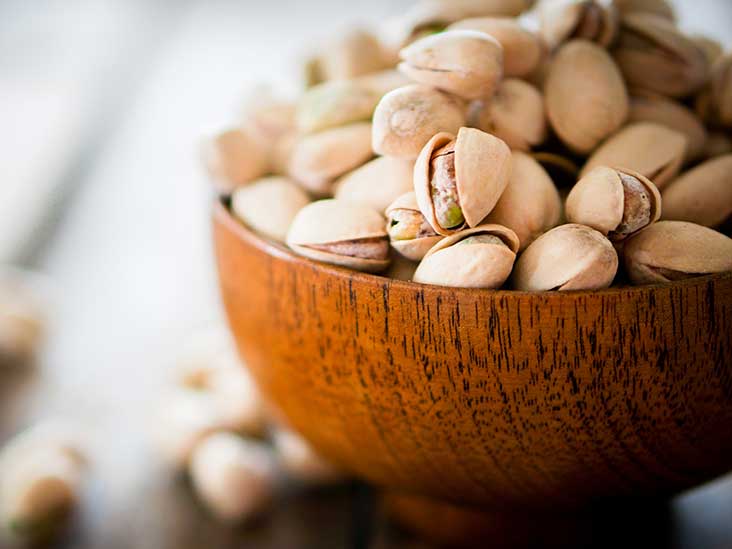
Similar risk factors for ED and coronary vascular diseases (CVDs), such as hyperlipidemia, lack of physical activity, obesity, and smoking show a common vascular and metabolic mechanism for both disorders.
VAJIKARAN IN AYURVEDIC TEXTS
Vajikaran as a concept has been defined in the Rig Veda and the Yajurveda, the first written texts of medicine, in Ayurveda. Vajikarana herbs are also the basis for therapies recommended in Kamasutra, a treatise defining methods for appropriate sexual satisfaction amongst couples. An excerpt of the definition derived fromthese texts suggests that a youth in sound health taking regularly some sort of Vajikarana remedy may enjoy the pleasure of youth every night during all the seasons of the year [8]. Old men, wishing to enjoy sexual pleasure or to secure the affections of women, as well as those suffering from senile decay or sexual incapacity, and persons weakened with sexual excesses may also use Vajikaran remedies. They are highly beneficial to handsome and opulent youths and to persons who have got many wives. According to Rasendra Sara Sangrah an ayurvedic text Vajikaran remedy makes a man sexually as strong as a horse (Vaji) and enables him to cheerfully satisfy the heat and amorous ardours of youngmaidens. Though in scientific terms these claims may represent a populous outlook, the popularity of Vajikaran in Ayurvedic system of medicine is nonetheless undisputed with numerous claims and textual references made to them during the course of human history.
Although many synthetic drugs are available and/or used to treat these problems, some of the drawbacks for these drugs include them being expensive and also their ability to provoke serious adverse effects, effective natural treatments are therefore still in demand. Even if many of the plants or natural products claim to prove their effectiveness without scientific evidence, a number of them are active and possess biological activity, proven by scientific data. Moreover, there is a dearth of systematic review of scientific literature on experimental evidence generated for medicinal plants useful in treating erectile dysfunction and there is a need for in depth pharmacological evaluation.
Advancement in the understanding of pharmacological basis of erectile and sexual functions at molecular levels is turning out to be stepping stones towards isolating the crucial physiologic factors involved in sexual arousal, thus helping to narrow down the search for aphrodisiac substances of choice.

Many people do not believe in love potions or aphrodisiacs, but countless numbers of men and women have used them down through the centuries, and there is clear proof that they are still in use today.
Ayurveda has the answer to such problems and has spelt out herbs and minerals, which can help provide a solution. India’s ancient history is also loaded with examples wherein Rishis, Munis and Maharajas have used such herbs and minerals mentioned in Ayurveda texts to improve sexual potency and thereafter having lived a healthy sexual life. Vatsayayan’s Kamasutra and the carvings of Khajuraho are living examples of the sexual revolution/glory prevalent during those times.
SAPTHADHATU: 7 ESSENTIAL BODY TISSUES
Having discussed the Ayurvedic basis for the role of Vajikarana herbs, it is important to understand the role of modern pharmacology and an insight into the control of the sexual behavior in the human body
According to Ayurveda, chronic and excessive stress, long hour of work, body weakness due to illness depletes a precious substance in the body called OJAS. It is said to be the physioloigical expression of consciousness be in charge of immunity, reproduction, beauty, and the overall health and well being of individual. Building OJAS is an art. The above herbal dravyas that boost OJAS energy in the body. This sumptuous blend of ojas building foods and herbs makes it easy to replenish your reserves.
These tissues, called dhatus have similarities to the major tissues identified by the modern science. These dhatus remain inside the human body in a proper equilibrium so that the body can function properly. It is said that a kind of disturbance or imbalance in their equilibrium causes ailments and diseases.
Ayurveda classifies the human body into seven constituents, or Sapthadhathu. These are the elements in the human body that nourish, grow and support the body and mind. The seven dhatus are:
Rasa Dhatu (plasma): This dhatu is a transporter of the body-plasma fluids and provides nourishment to all the other dhatus. The Rasa dhatu is supported by the kapha dosha
Rakta Dhatu (blood): This dhatu is the basis of life and provides nourishment to all the tissues and cells in the body. It also provides strength to the body and color to blood. The Rakta dhatu is supported by the pitha dosha
Mamsa Dhatu (muscle): This dhatu provides movement to the muscular system in the body. It provides physical support to the meda dhatu. The Mamsa dhatu is supported by the kapha dosha
Meda Dhatu (fat): This dhatu collects the energies and stores it to provide strength to the body. The adipose tissue also stores fat as a means of body lubrication and a support to bones. The Medha dhatu is supported by the kapha dosha
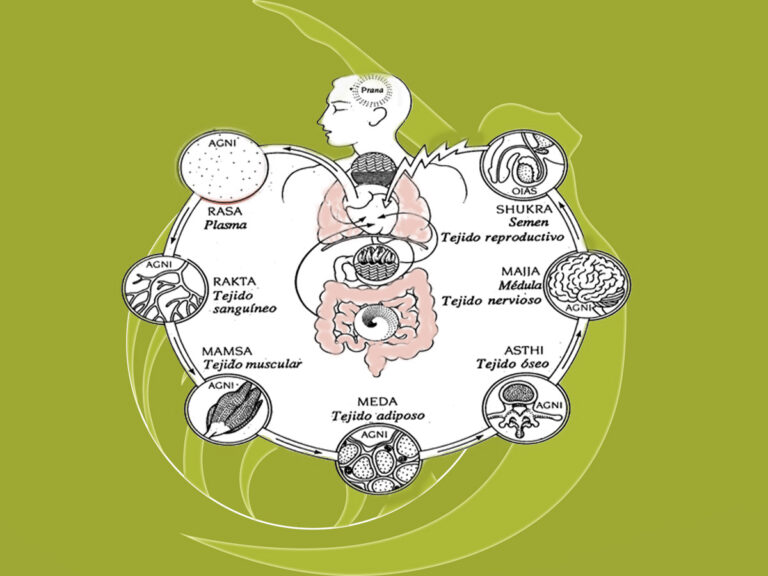
Asthi Dhatu (bone): This dhatu includes all the bones and cartilages and gives shape to the body. It also supports the Mamsa dhatu. The Asthi dhatu is supported by the vata dosha
Majja Dhatu (bone marrow): This dhatu refers to bone marrow. It nourishes the body and helps maintain its functions. Majja dhatu strengthens the body, fills the bones and nourishes the Shukra dhatu. The Majja dhatu is supported by the kapha dosha
Shukra Dhatu (reproductive tissue): This dhatu nourishes the reproductive strengths of an individual. It includes sperm and ovum. The Shukra dhatu is supported by the kapha dosha.
All the seven dhatus are inter-connected; the malfunctioning of a single dhatu can have an impact on all the other dhatus. The dhatus are composed of the five mahabhutas or elements. Thus, the doshas, which are also made up of the five elements help manage the balance of the dhatus. A system of well-balanced doshas helps balance the dhatus, thus leading to the proper functioning of the entire system of the body.
SEXUAL RELATIONSHIP STYLE IN THE ANCIENT INDIAN TEXTS
Often the sexual style of humans is compared to and is defined in terms of the animal sexual relationship style in the ancient Indian texts. The common examples used are:
Chataka (sparrow) – Multiple short span conjugations with production of small amount of semen.
Gaja (Elephant) – Once in a while longtime conjugation with abundant semen discharge
Vrusha (Bull) – regular stable seasonal conjugation with more quality semen
Ashwa (Horse) – Regular forceful dynamic conjugation with the average quantitative semen.

ABNORMAL SPERM MORPHOLOGY: WHAT DOES IT MEAN?
Normal sperm have an oval head with a long tail. Abnormal sperm have head or tail defects — such as a large or misshapen head or a crooked or double tail. These defects might affect the ability of the sperm to reach and penetrate an egg. Typically, only around 4% to 10% of the sperm in a semen sample are normal, meaning that the vast majority don’t look perfect under the microscope. Man’s sperm, which when abnormal can decrease fertility and make it more difficult to fertilize the woman’s egg.
Sperm morphology is poorly understood, and it can be subjective. Most male fertility experts agree that the role of sperm morphology in predicting pregnancy is unclear, and that it’s a poor predictor of infertility unless nearly 100% of the sperm are abnormal.
Along with sperm morphology, a typical semen analysis also assesses:
Semen volume, Total sperm number, Sperm concentration, Vitality (percent alive), Movement (motility).

OLIGOSPERMIA
Low sperm count means that the fluid (semen) you ejaculate during an orgasm contains fewer sperm than normal.
A low sperm count is also called oligospermia (ol-ih-go-SPUR-me-uh). A complete absence of sperm is called azoospermia. Your sperm count is considered lower than normal if you have fewer than 15 million sperm per milliliter of semen.
Having a low sperm count decreases the odds that one of your sperm will fertilize your partner’s egg, resulting in pregnancy. Nonetheless, many men who have a low sperm count are still able to father a child.

LOW SPERM COUNT SYMPTOMS MIGHT INCLUDE
Problems with sexual function — for example, low sex drive or difficulty maintaining an erection (erectile dysfunction)
Pain, swelling or a lump in the testicle area
Decreased facial or body hair or other signs of a chromosome or hormone abnormality

HYPOSPERMIA
Hypospermia is a condition in which humans have an unusually low ejaculate (or semen) volume, less than 1.5 mL. It is the opposite of hyperspermia, which is a semen volume of more than 5.5 mL. It should not be confused with oligospermia, which means low sperm count. Normal ejaculate when a man is not drained from prior sex and is suitably aroused is around 1.5–6 mL, although this varies greatly with mood, physical condition, and sexual activity.
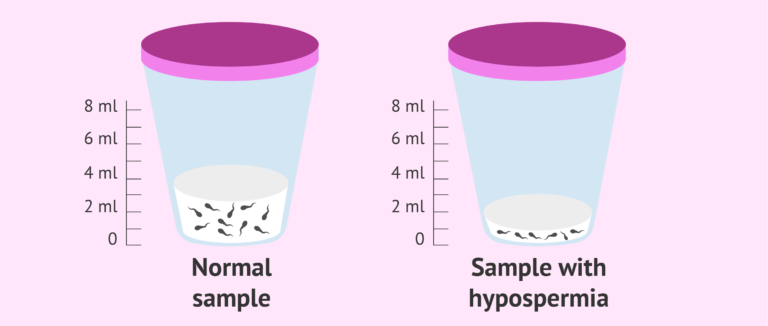
ASTHENOZOOSPERMIA
Asthenozoospermia (or asthenospermia) is the medical term for reduced sperm motility. Complete asthenozoospermia, that is, 100% immotile spermatozoa in the ejaculate, is reported at a frequency of 1 of 5000 men. Causes of complete asthenozoospermia include metabolic deficiencies, ultrastructural abnormalities of the sperm flagellum and necrozoospermia.
It decreases the sperm quality and is therefore one of the major causes of infertility or reduced fertility in men.
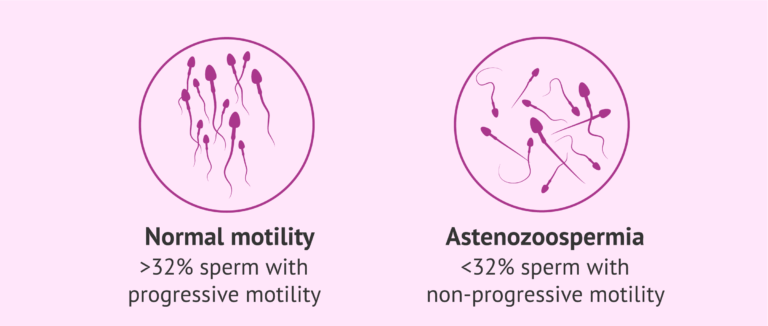
AZOOSPERMIA
Azoospermia is the medical condition of a man whose semen contains no sperm. It is associated with male infertility, but many forms are amenable to medical treatment. In humans, azoospermia affects about 1% of the male population and may be seen in up to 20% of male infertility situations.

NECROSPERMIA
Necrospermia (or necrozoospermia) [Shukra Dosha in Hindi or Sanskrit] is a condition in which there is a low percentage of live and a very high percentage of immotile spermatozoa in semen. Necrospermia is usually confused with asthenozoospermia, which is the inability of the sperm to move even when alive. To check for necrospermia, samples with a high percentage of immobile sperm are stained to check for vitality. If they are dead sperm they will be stained, as the membrane is broken and the dye enters indiscriminately. Necrozoospermia is a rare condition with a reported prevalence of 0.2-0.48% in infertile subjects.

TERATOSPERMIA
Teratospermia or teratozoospermia is a condition characterized by the presence of sperm with abnormal morphology that affects fertility in males.
The causes of teratozoospermia are unknown in most cases. However, Hodgkin’s disease, coeliac disease, and Crohn’s disease may contribute in some instances. Lifestyle and habits (smoking, toxin exposure, etc.) can also cause poor morphology. Varicocele is another condition that is often associated with decreased normal forms (morphology). In cases of globozoospermia (sperm with round heads), the Golgi apparatus is not transformed into the acrosome that is needed for fertilization.

DRUGS THAT MAY CAUSE ERECTION PROBLEMS
Many medicines and recreational drugs can affect a man’s sexual arousal and sexual performance. What causes erection problems in one man may not affect another man.
The following is a list of some medicines and drugs that may cause erectile dysfunction (ED) in men. There may be additional drugs other than those on this list that can cause erection difficulties.

Antidepressants and other psychiatric medicines
- Amitriptyline (Elavil)
- Amoxapine (Asendin)
- Buspirone (Buspar)
- Chlordiazepoxide (Librium)
- Chlorpromazine (Thorazine)
- Clomipramine (Anafranil)
- Clorazepate (Tranxene)
- Desipramine (Norpramin)
- Diazepam (Valium)
- Doxepin (Sinequan)
- Fluoxetine (Prozac)
- Fluphenazine (Prolixin)
- Imipramine (Tofranil)
- Isocarboxazid (Marplan)
- Lorazepam (Ativan)
- Meprobamate (Equanil)
- Mesoridazine (Serentil)
- Nortriptyline (Pamelor)
- Oxazepam (Serax)
- Phenelzine (Nardil)
- Phenytoin (Dilantin)
- Sertraline (Zoloft)
- Thioridazine (Mellaril)
- Thiothixene (Navane)
- Tranylcypromine (Parnate)
- Trifluoperazine (Stelazine)

Antihistamine medicines (certain classes of antihistamines are also used to treat heartburn):
- Cimetidine (Tagamet)
- Dimenhydrinate (Dramamine)
- Diphenhydramine (Benadryl)
- Hydroxyzine (Vistaril)
- Meclizine (Antivert)
- Nizatidine (Axid)
- Promethazine (Phenergan)
- Ranitidine (Zantac)
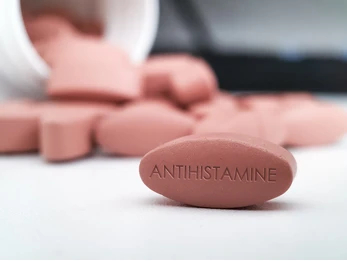
High blood pressure medicines and diuretics (water pills)
- Atenolol (Tenormin)
- Bethanidine
- Bumetanide (Bumex)
- Captopril (Capoten)
- Chlorothiazide (Diuril)
- Chlorthalidone (Hygroton)
- Clonidine (Catapres)
- Enalapril (Vasotec)
- Furosemide (Lasix)
- Guanabenz (Wytensin)
- Guanethidine (Ismelin)
- Guanfacine (Tenex)
- Haloperidol (Haldol)
- Hydralazine (Apresoline)
- Hydrochlorothiazide (Esidrix)
- Labetalol (Normodyne)
- Methyldopa (Aldomet)
- Metoprolol (Lopressor)
- Nifedipine (Adalat, Procardia)
- Phenoxybenzamine (Dibenzyline)
- Phentolamine (Regitine)
- Prazosin (Minipress)
- Propranolol (Inderal)
- Reserpine (Serpasil)
- Spironolactone (Aldactone)
- Triamterene (Maxzide)
- Verapamil (Calan)
Thiazides are the most common cause of erectile dysfunction among the high blood pressure medicines. The next most common cause is beta blockers. Alpha blockers tend to be less likely to cause this problem.
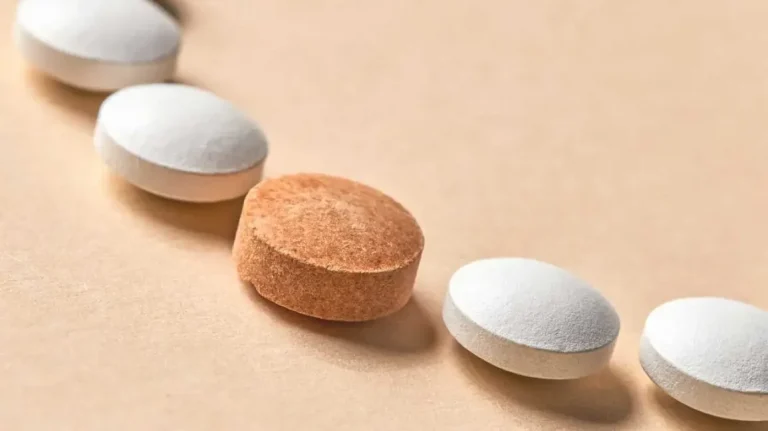
Parkinson disease medicines
- Benztropine (Cogentin)
- Biperiden (Akineton)
- Bromocriptine (Parlodel)
- Levodopa (Sinemet)
- Procyclidine (Kemadrin)
- Trihexyphenidyl (Artane)
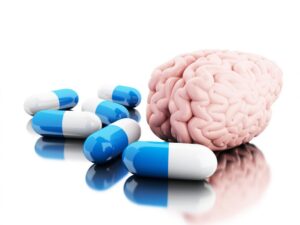
Chemotherapy and hormonal medicines
- Antiandrogens (Casodex, Flutamide, Nilutamide)
- Busulfan (Myleran)
- Cyclophosphamide (Cytoxan)
- Ketoconazole
- LHRH agonists (Lupron, Zoladex)
- LHRH antagonist (Firmagon)
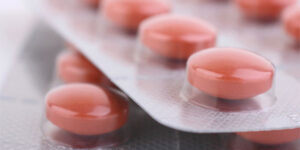
Other medicines
- Aminocaproic acid (Amicar)
- Atropine
- Clofibrate (Atromid-S)
- Cyclobenzaprine (Flexeril)
- Cyproterone
- Pseudoephedrine (Sudafed)
- Sumatriptan (Imitrex)
- Digoxin (Lanoxin)
- Disopyramide (Norpace)
- Dutasteride (Avodart)
- Estrogen
- Finasteride (Propecia, Proscar)
- Orphenadrine (Norflex)
- Prochlorperazine (Compazine)
- Furazolidone (Furoxone)
- H2 blockers (Tagamet, Zantac, Pepcid)
- Indomethacin (Indocin)
- Lipid-lowering agents
- Metoclopramide (Reglan)
- Nonsteroidal anti-inflammatory drugs (NSAIDs, ibuprofen, etc.)

Opiate analgesics (painkillers)
- Codeine
- Fentanyl (Innovar)
- Hydromorphone (Dilaudid)
- Meperidine (Demerol)
- Methadone
- Morphine
- Oxycodone (Oxycontin, Percodan)

Recreational drugs
- Alcohol
- Amphetamines
- Barbiturates
- Cocaine
- Marijuana
- Heroin
- Nicotine
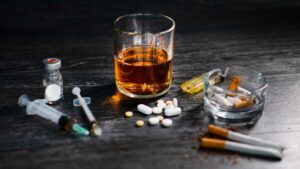
4MEWE is a health Supplement that retains your youthful vigour. Considered in Ayurveda, it is a mixture of natural ingredients that boosts the immune system and optimizes physical performance. In Ayurveda, herbs which helps to increase strength, immunity and vitality. Are used to supports immune system.
Ayurveda looks at lack of libido, addresses all these root causes to correct the lack of libido. Ayurveda has the answer to such problems and has spelt out herbs and minerals, which can help provide a solution. India’s ancient history is also loaded with examples wherein Rishis, Munis and Maharajas have used such herbs and minerals mentioned in Ayurveda texts to improve sexual potency and thereafter having lived a healthy sexual life. Vatsayayan’s Kamasutra and the carvings of Khajuraho are living examples of the sexual revolution/glory prevalent during those times.
INDIAN HERBS WITH APHRODISIAC PROPERTIES
Withania somnifera – Root extract possesses rejuvenating and aphrodisiac properties.
Alkushi or Kauch Beej – It possesses aphrodisiac property. The extract of seeds is helpful in spermatorrhea and improves sexual health.
Safed Mushali – It is a well-known sexual nutritive tonic and is often given with milk along with other ingredients in cases of seminal weakness and impotence.
Gokshru – It increases the sperm count and enhances the desire for sex. Besides, it helps to make sperm thickness.
Akarkara – It helps in erection of penis and boosts the sexual desire.
Jaiphal – It enhances sexual desire and stops premature ejaculation.
Lavang – Helps in delaying ejaculation and increases the duration of sexual intercourse. Lavang increases the body temperature and thereby enhances the desire for sex.
Smilax china: an aphrodisiac, tonic, stimulant and indicated in seminal weakness.
Salmalia malabaricum: The fruits are useful in the weakness of genital organs. It helps in spermatogenesis and is an aphrodisiac.
Cuminum cyminum: Stimulant and possesses astringent properties. Used as aphrodisiac.
Myristica fragrans: The nut is stimulant and aphrodisiac. Used in impotence, sexual and general debility.
Syzygium aromaticum: Used as aphrodisiac, is a good stimulant and used in oils prescribed for local application.
Argyreia speciosa: Induces spermatogenesis, also used in seminal weakness.
Zingiber officinale: Used as aphrodisiac, is a stimulant and a potent drug.
Piper longum: Its infusion is stimulant, general tonic and aphrodisiac. Used in seminal weakness.
Piper nigrum: It is stimulant, aphrodisiac and recommended for functional impotence.
Bambusa arundinacea: Stimulant astringent and aphrodisiac.
Asparagus racemosus: Nutritive, tonic, aphrodisiac, increases semen secretion, stops pre-mature ejaculation and spermatorrhea.
Vitis vinifera: Recommended for seminal weakness.
Elettaria cardamomum: Recommended in cases of impotence.
Mucuna prurita: Seeds are astringent, stimulant, nervine tonic and aphrodisiac. It forms one of the most important and essential constituents of aphrodisiac products.

Saussurea lappa: Used as aphrodisiac. In Ayurved recommended for seminal purification.
Cyperus Scariosus: Aphrodisiac.
Pueraria tuberose: General tonic, recommended for spermatorrhoea.
Benincasa hispida: Nervine and general tonic. Helps in spermatogenesis.
Mesua ferrea: Used and recommended as tonic for improving libido.
Nardostachys: Gives strength to the body. Useful in impotence.
Cinnamomum camphora: Gives strength, improves libido acts as aphrodisiac. In smaller dosage acts as stimulant, higher dosage will be supportive.
Tribulus terrestris: Esteemed as aphrodisiac and tonic. Used in spermatorrhoea and impotence.
Sida cordifolia: The roots are cooling, astringent, stomachic and tonic, the seeds are considered to be aphrodisiac.
Pistacia integerrima: Astringent, tonic and stimulant.
Piper cubeba: Used as stimulant in genitor-urinary diseases. Used as aphrodisiac.
Crystal sugar: Stimulant excipent.
4MEWE is a health product that retains your youthful vigor. YOLO is taken daily to increases testosterone level by over 30%. It also improved the speed, motility and the number of sperms in men.
4MEWE is the excellent combination of aphrodisiac, rejuvenating and spermatogenic drug.
4MEWE is very useful for all type of sexuality and fertility related disorders.
4MEWE is the best drug to increase libido, to treat erectile dysfunction and sperm abnormality.
4MEWE is beneficial to enjoy their sexual life normally and improves the fertility and enhances the longevity.
4MEWE is typically indicated for improving men’s health. Being a natural apphrodisiac, it has powerful spermatogenic properties that are extremely beneficial for treating oligospermia (i.e. low sperm count), hypospermia (low volume of semen), asthenozoospermia (i.e. sperm motility), teratospermia (i.e. abnormal sperm shape) and enhances spermatogenesis (i.e. sperm production). The abundance of antioxidants improves the production of male hormones like testosterone and luteinizing hormone. It also treats conditions like erectile dysfunction and premature ejaculation.
4MEWE long with nourishing all seven dhatus, it acts as a good rejuvenator and an aphrodisiac.
4MEWE more natural remedies for those who don’t want the potentially negative side effects of ALLOPATHY MEDICINE.
IMPORTANT NOTES
- There are no known side effects with this 4MEWE, however it is best to use this product under medical supervision.
- People with diabetes, high cholesterol, heart diseases and high BP should exercise precaution.
- In very high dose, it may cause diarrhoea and indigestion.
- This is classical product of Ayurveda. As per ayurvedic formulary of India.
- It is easy to digest formula to rebuild the body’s reserves and boost energy, vitality and endurance. Supporting gentle cleansing.
- Improves body stamina, maintain body weight.
- Improves reproductive abilities of male and females.
- Healthy peristalsis of bowels, moisturizing support of respiratory tract.
4MEWE - A NATURAL APHRODISIAC
4 ME WE ARE ONCE
- Increase sperm count.
- Increase sperm volume.
- Improve motility of Semen.
- Sperm morphology is
- Increase in sperm concentration
- Increase in Vitality (percent alive)
- Restore abnormal sperm head or tail defects
- Improves sexual desire and maintains the erection.
- Increases the ejaculation threshold.
- Boosts up the sexual drive in old age people.
- Provides hope to infertile couples.
- Effective aphrodisiac for chronic diabetes, hypertensive and old persons.
- Acting as an invigorating body and mind rejuvenator.
- Help in restoring the vigour, vitality and strong psyche.
- Enhances natural tactile stimulus,
- Prevents premature ejaculation.
- A powerful Aphrodisiac.

Indications: Impotence Low Libido Dosage:
It is a special mixture of stimulating healthy and effective supplement which help in regaining lost vigour and improves the sexual health. Removes fatigue. Increases the sexual desire even in healthy men.
4MEWE is a perfect prescription for complete rejuvenation, vigour, vitality and restorative. Useful to enhance Shukra Dhatu (reproductive tissue). Improves immunity, helps in weakness and fatigue. Acts as aphrodisiac.
Dosage
The recommended dose of 10 grams to be taken in the morning and evening, preferably with warm milk. For best result take daily. Patients with kidney problem, urinary stones and gout should consult physician before using the formulation. Plus, it should not be taken on empty stomach. Not recommended for children.
Packing: 200 grams and 400 grams.
